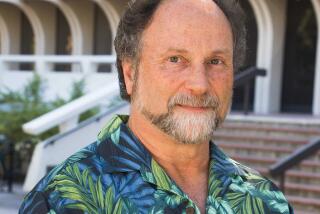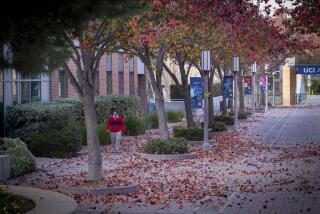Tenure and ‘Deadwood’ at UC
I am responding to Jack Miles’ misleading article on the University of California tenure system in the Times Opinion section. Miles’ comments--and his quotes of Bill Honig’s comments--give readers the impression that much of the University of California faculty is deadwood, not fulfilling its responsibilities to California’s people and therefore not deserving their support.
Yes, the University of California does have deadwood. I don’t know how much, nor can Miles possibly know. However, after many years at UCLA and after reviewing hundreds of records of faculty performance at all University campuses I see no way deadwood could be over 10% of the tenured faculty. It is not a “forest of deadwood,” a “distressingly large number,” a large “number of living, breathing, serenely aging tenure mistakes,” to quote some of Miles’ deprecating remarks. I would like Miles to find another California state institution in which less than 10% of members are deadwood.
To back up his contention, Miles uses “bookkeeping” to evaluate faculty activity, that is, six hours of teaching plus 12 hours of preparation equals 18 hours work equals a cushy part-time job. But he does not mention scholarly work necessary for teaching graduate students, heavy administrative work loads, continual sitting on university and national committees, necessary attendance at professional meetings, acting as unpaid editors of books and journals, giving lectures to non-classroom gatherings.
Now for Miles’ invidious comparisons with the California State University system, which fulfills its responsibility for teaching undergraduate students admirably. The University of California goals are different. They are doing research and educating graduate students. The university--a leading research institution of the world--certainly produces much, much more research than the California State system, but Miles’ comments make it sound as if it doesn’t.
Miles’ suggestion that deadwood non-researchers teach more is fine, but making official decisions about who is “deadwood” and who isn’t is no small problem. Even if official “deadwood” were required to double its teaching load, teaching would increase by perhaps 5%, hardly solving the state’s and University’s financial problems.
Finally, Miles mentions neither scholarship, the University’s backbone, nor time faculty devotes to it outside the classroom. For example, a senior professor who writes almost nothing, who teaches only six hours of graduate courses each quarter, and who travels the world attending meetings and giving lectures sounds like real deadwood. But he is possibly the most illustrious scholar and teacher in his field in the world. Maintaining his level of scholarship is much more than a full-time job.
Yes, Miles, we have deadwood. Everyone in the University knows it and nobody likes it, but they appreciate that it is impossible to predict how every tenured professor will do even after six years’ probation. So let’s have a little more realistic view of the problem and a little less bombast. The situation doesn’t seem to be as bad as you want to make it, anyway.
Dr. DANIEL H. SIMMONS
Prof. of Medicine, Emeritus
UCLA
More to Read
Sign up for Essential California
The most important California stories and recommendations in your inbox every morning.
You may occasionally receive promotional content from the Los Angeles Times.










